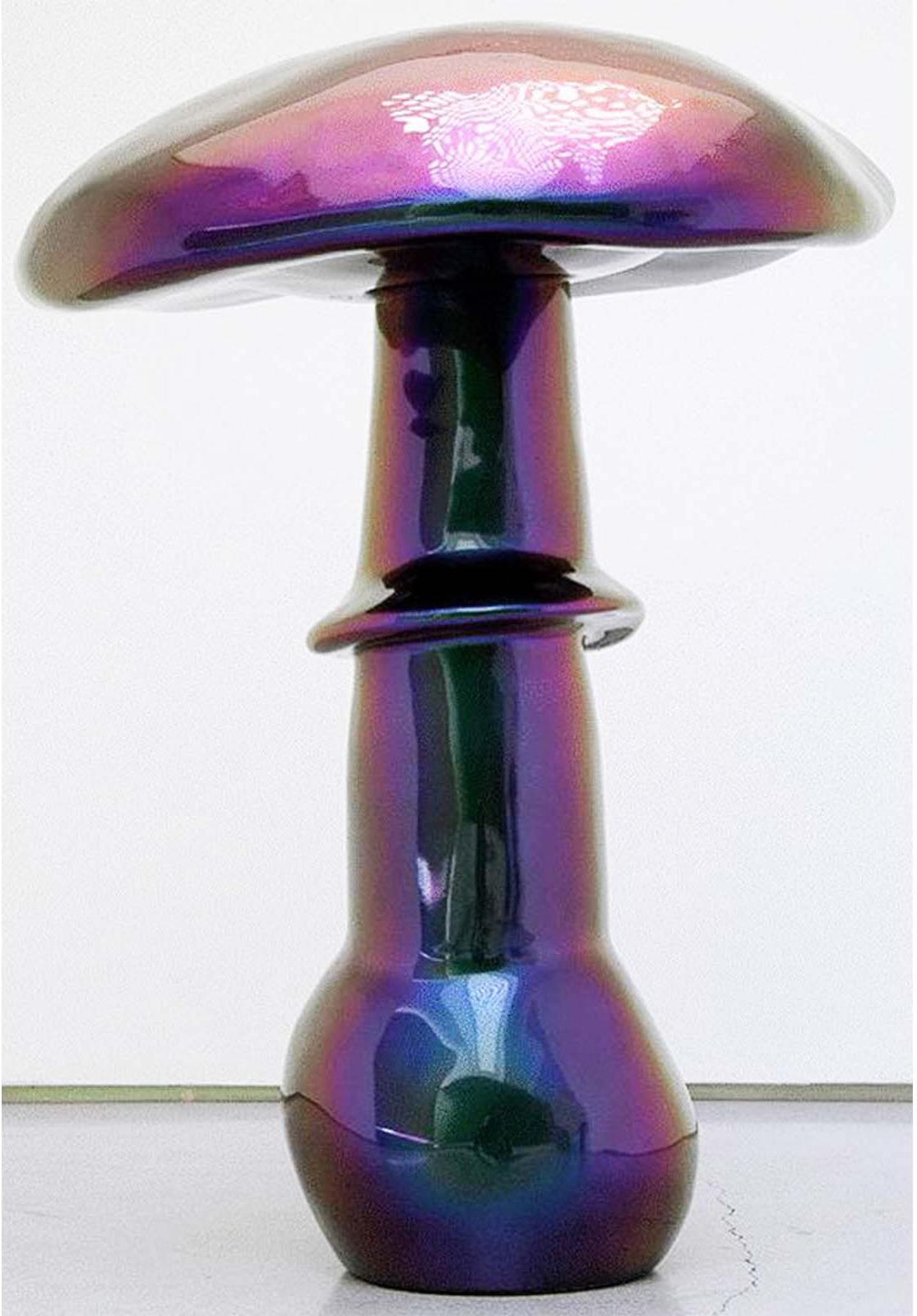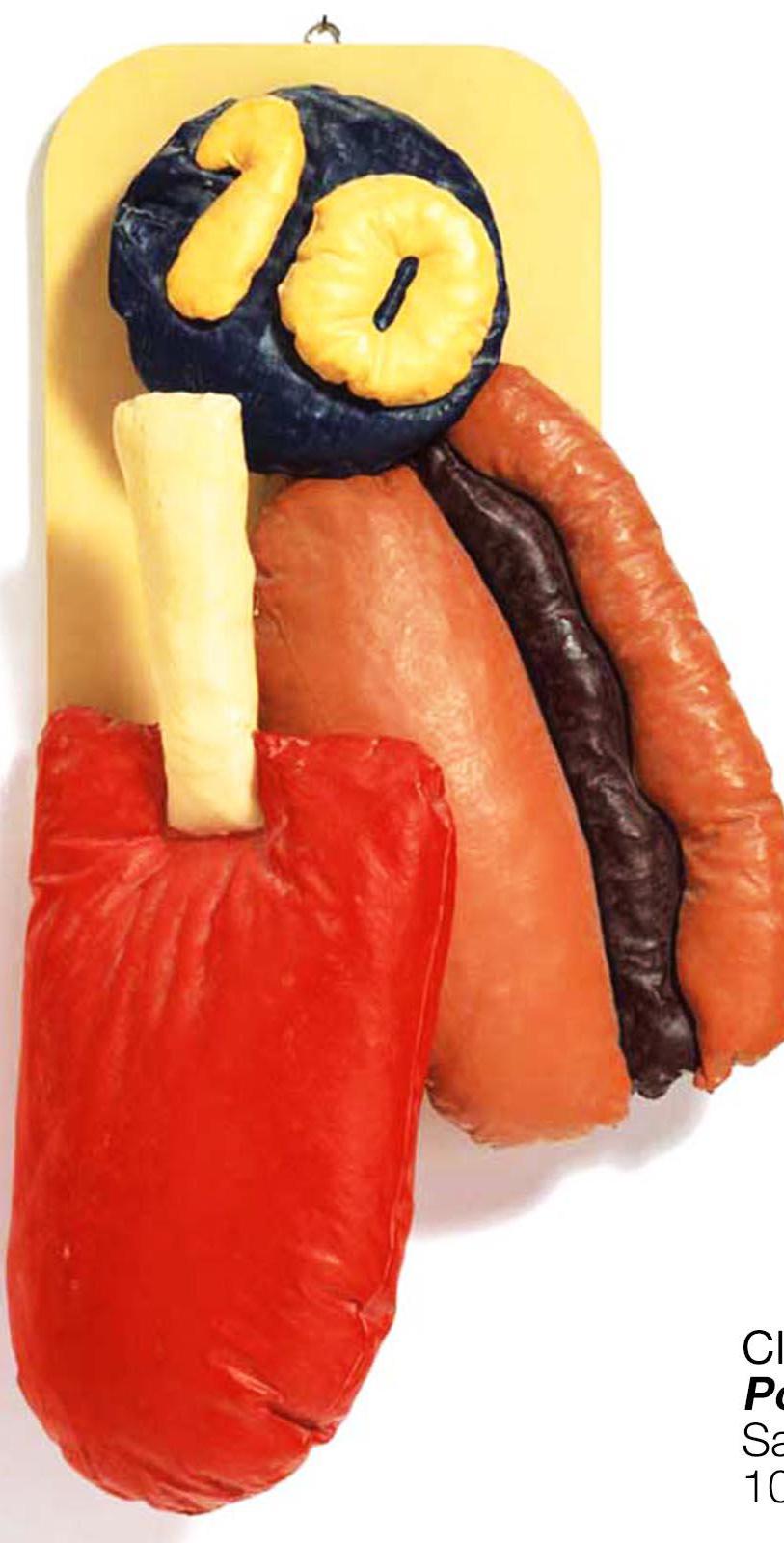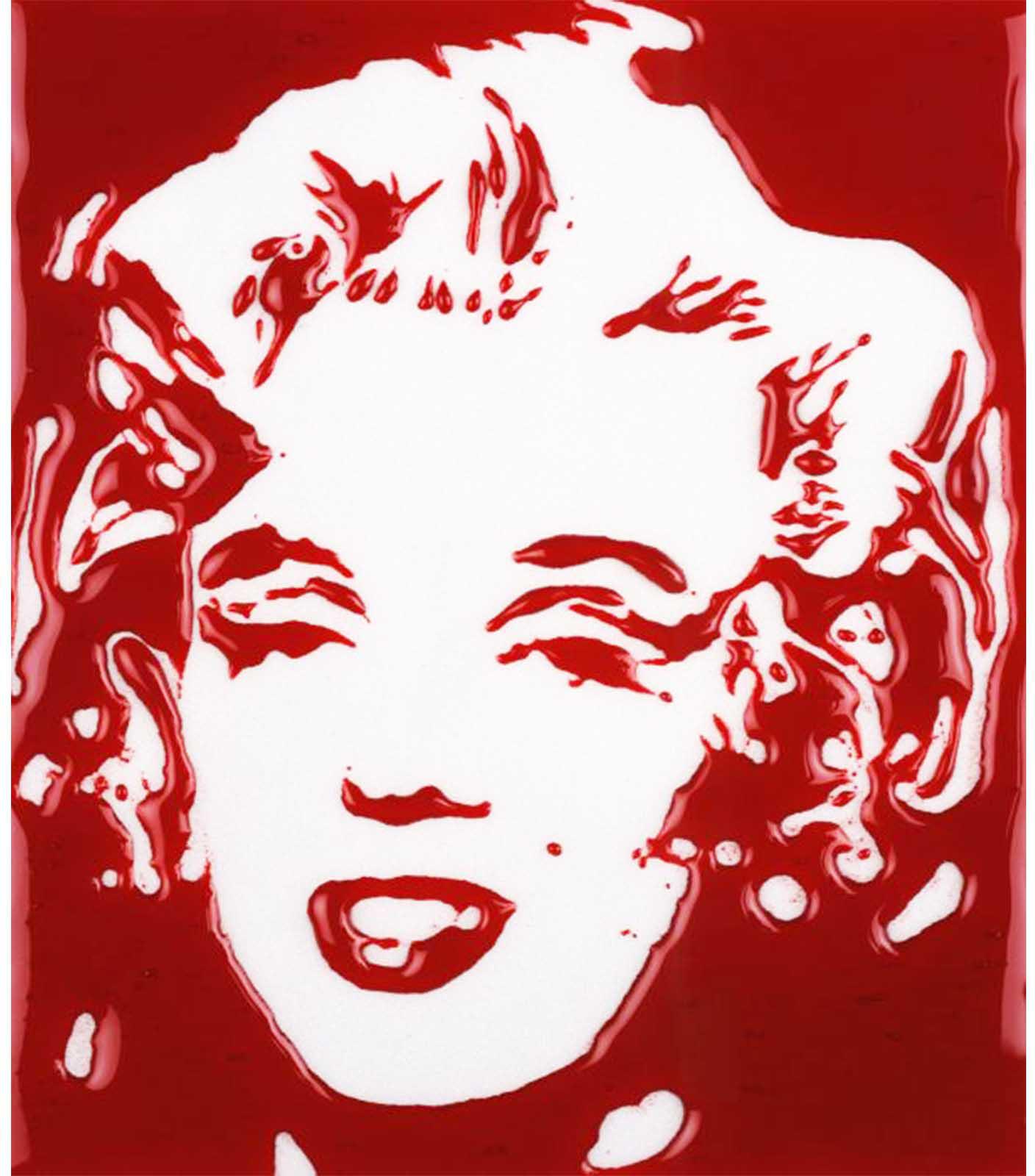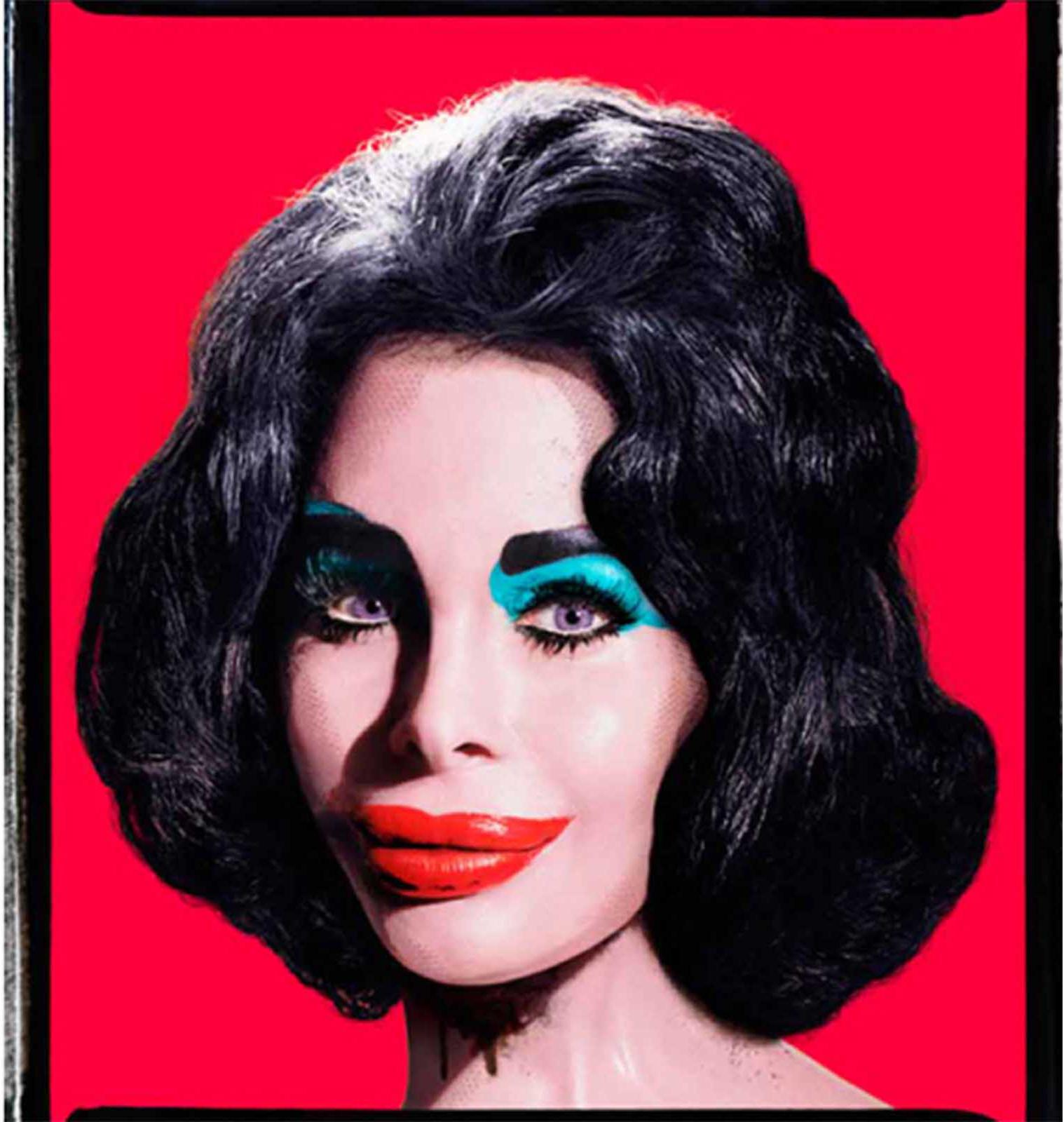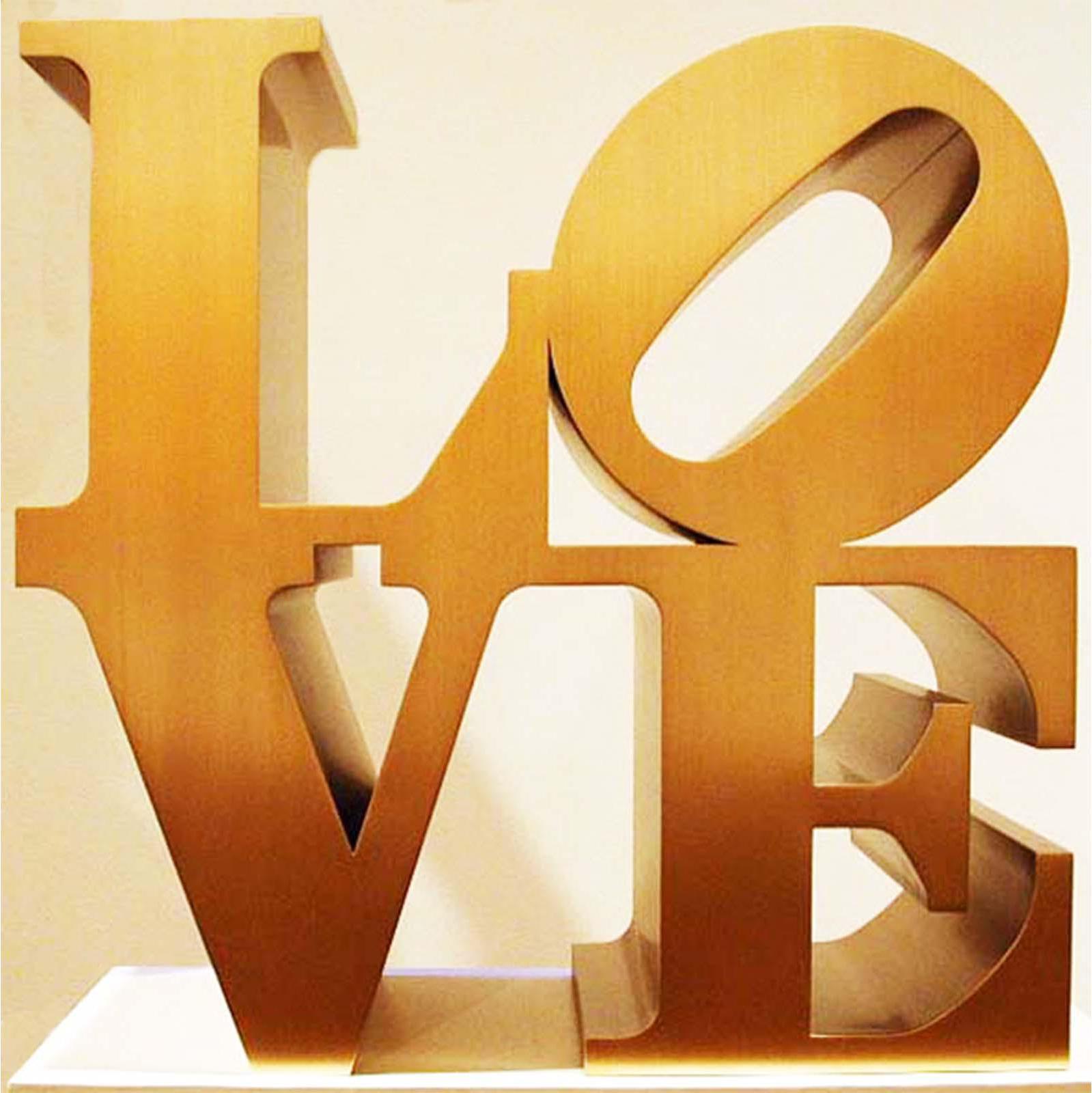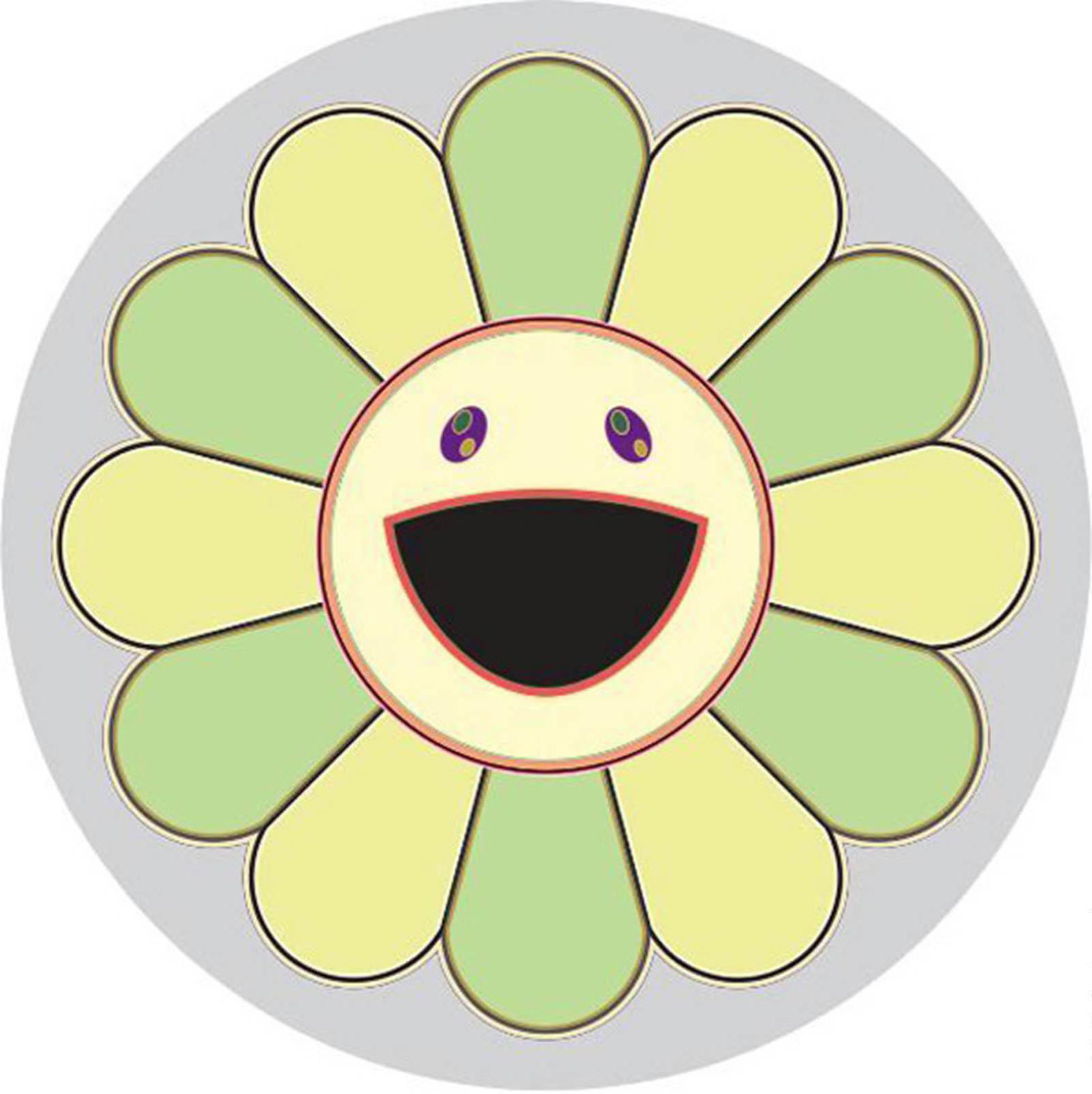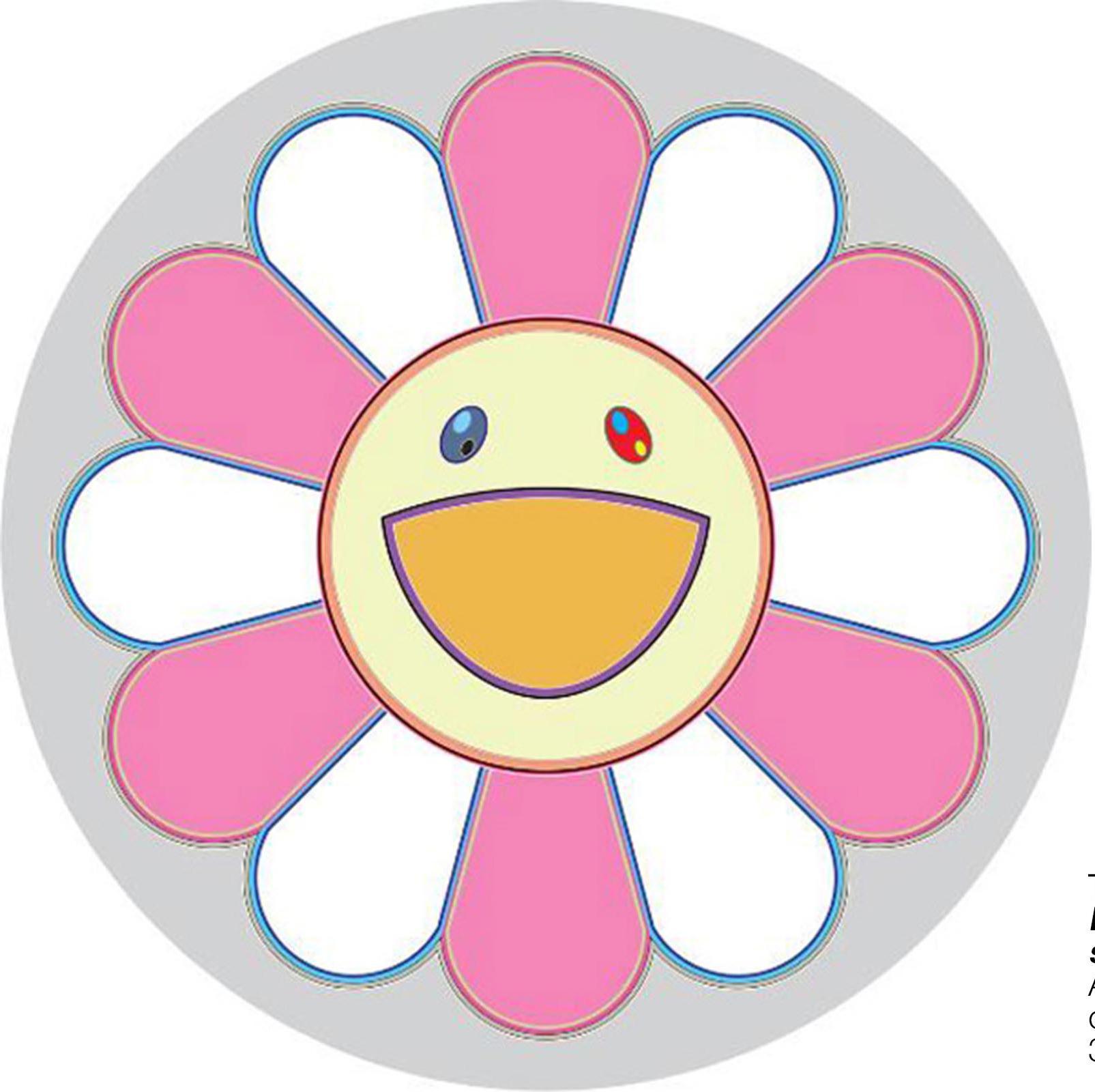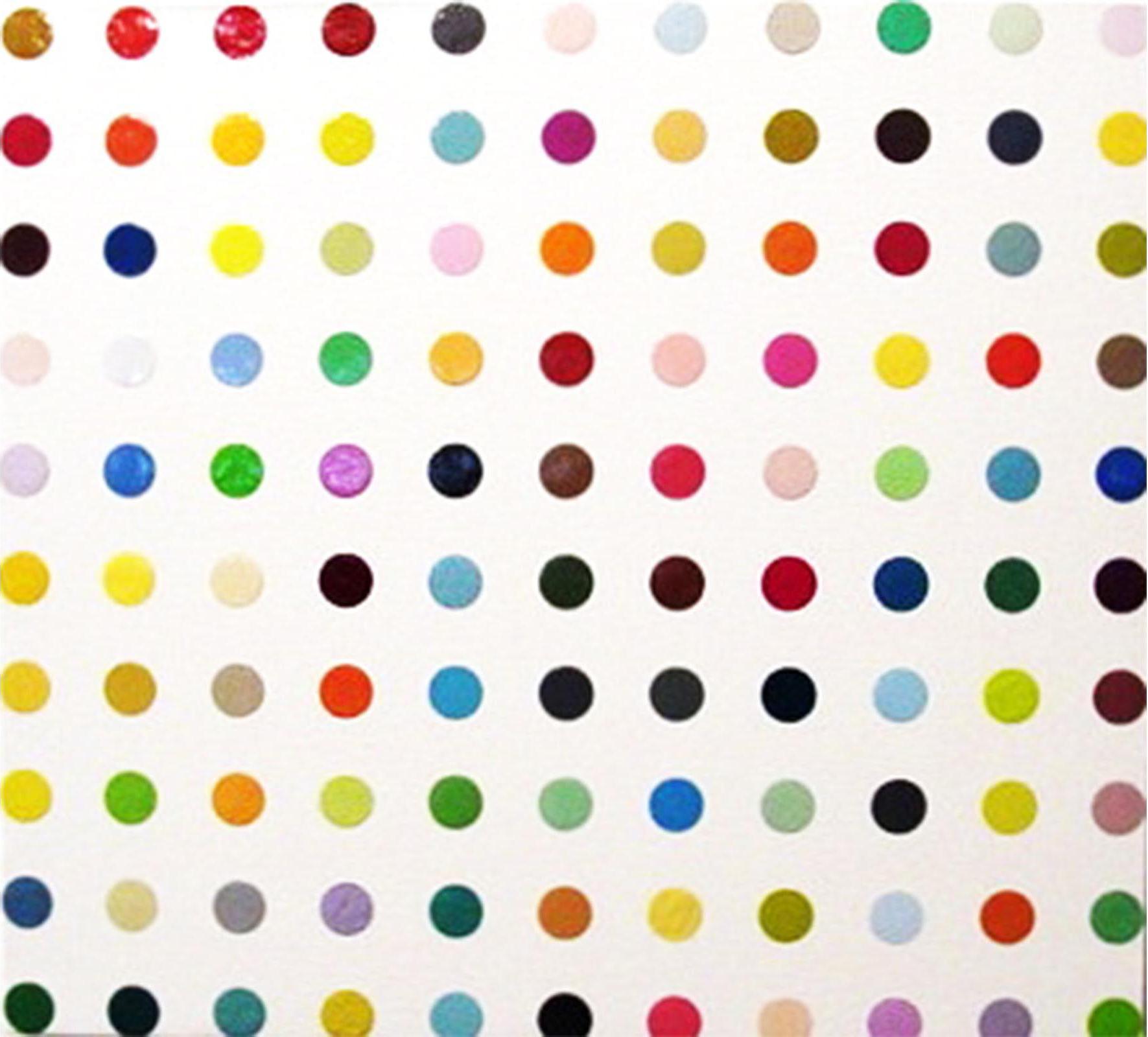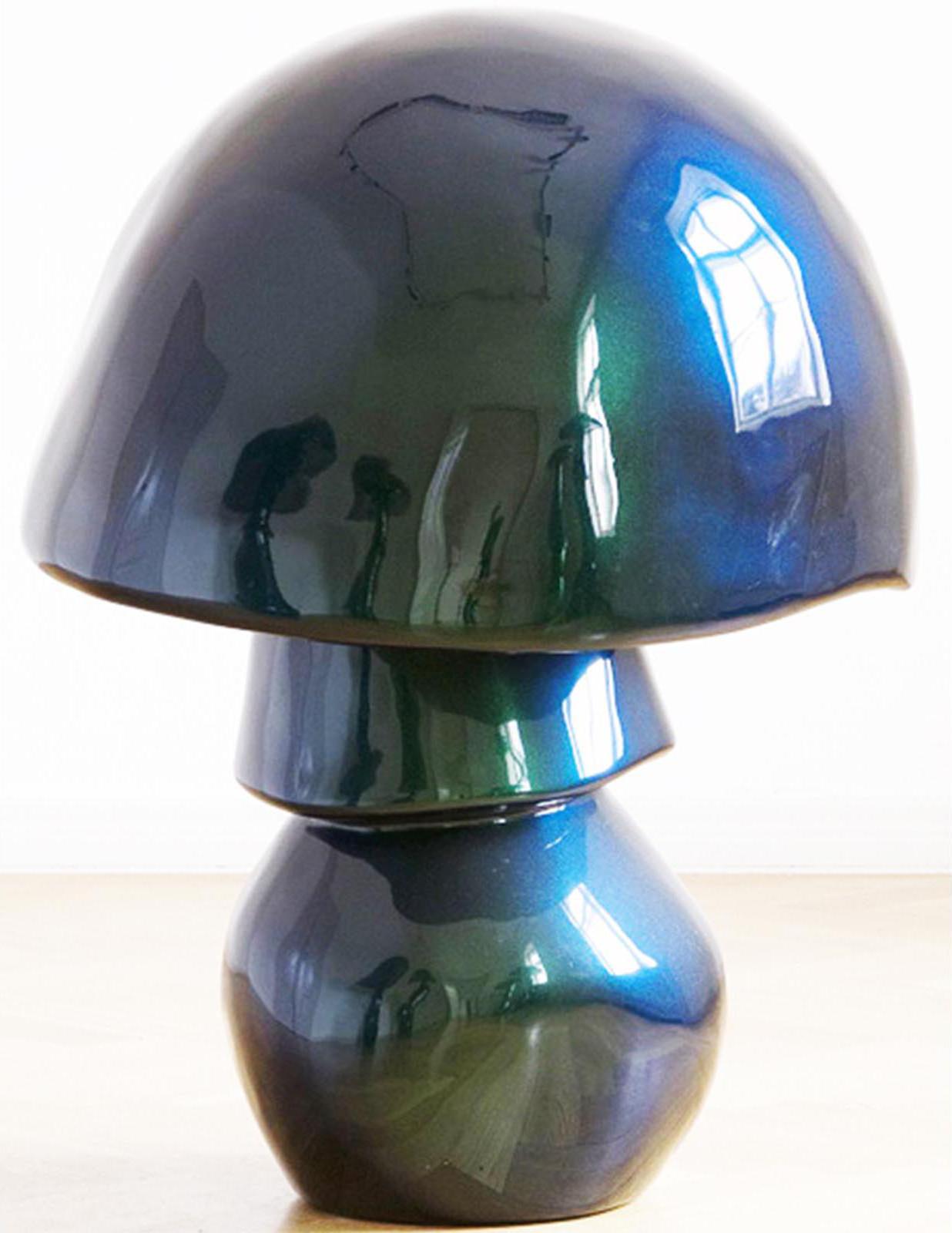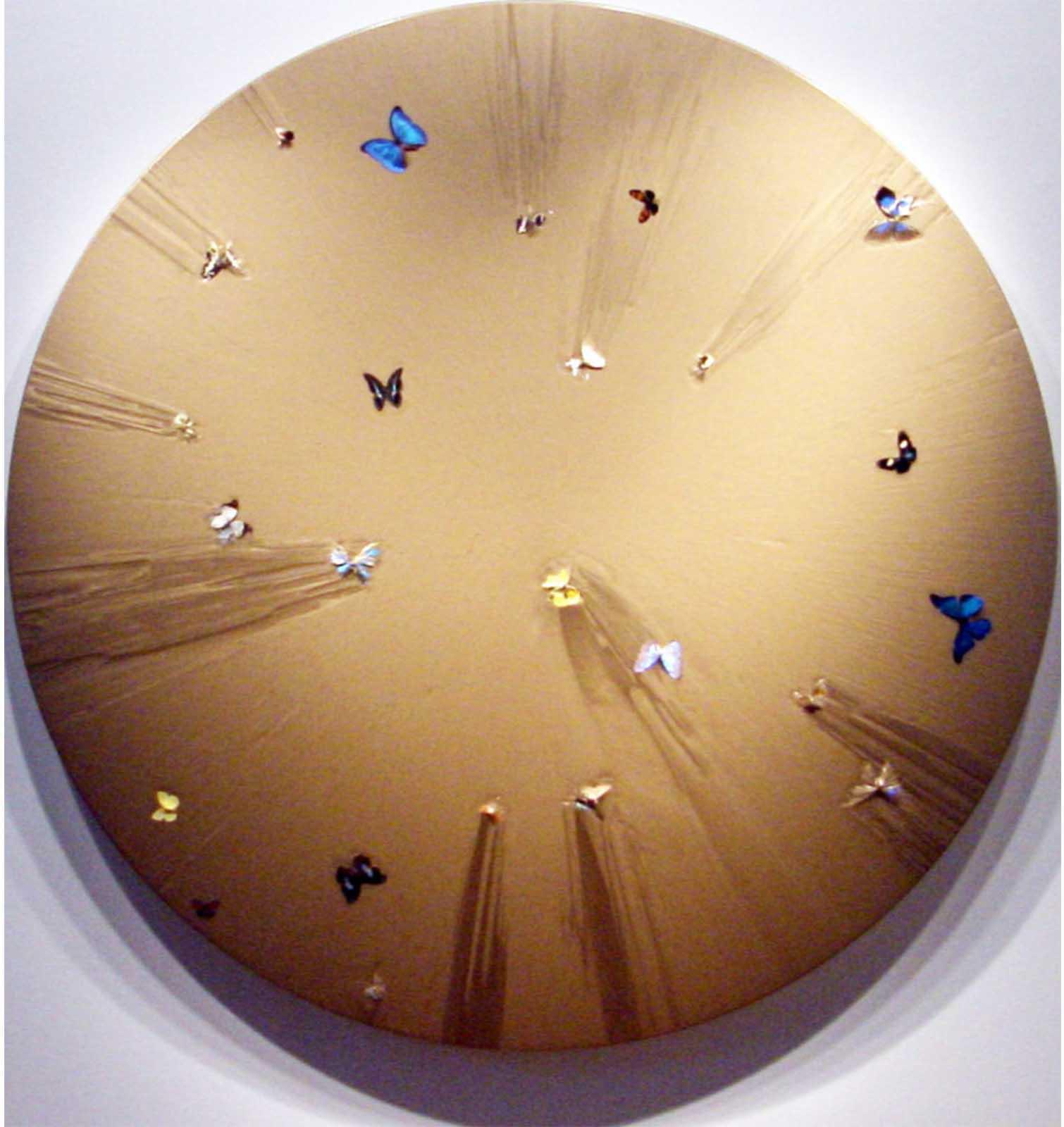Pop My Cherry
-
![]() Sylvie Fleury
Sylvie Fleury
Mushroom (UG 511 rage illusion CP),2006
Fiberglass, metallic car paint
130 x 110 x 110 cm -
![]() Claes Oldenburg
Claes Oldenburg
Popsicle, Hamburger, Price,1961-1962
Sailcloth, foam rubber and enamel
104.1 x 40.6 x 27.9 cm -
![]() Vik Muniz
Vik Muniz
Bloody Marilyn,2001
C-Print
154 x 133 cm -
![]() David Lachapelle
David Lachapelle
Amanda as Andy Warhol’s Liz in red, New York,2003
C-Print
182.8 x 172.7 cm -
![]() Robert Indiana
Robert Indiana
Love,1999
Bronze
91.4 x 91.4 x 45.7 cm -
![]() Takashi Murakami
Takashi Murakami
Flower of joy-lemon lime,2007
Acrylic and platinum leaf on canvas mounted on board
39.4 x 39.4 cm -
![]() Takashi Murakami
Takashi Murakami
Flower of joy-mashmallow strawberry,2007
Acrylic and platinum leaf on canvas mounted on board
39.4 x 39.4 cm -
![]() Damien Hirst
Damien Hirst
1 inch spot,2007
Household gloss on canvas
48.3 x 53.3 cm -
![]() Sylvie Fleury
Sylvie Fleury
Mushroom (UG 511 rage xtc AG),2006
Fiberglass, metallic, car paint
110 x 80 x 80 cm -
![]() Damien Hirst
Damien Hirst
King Midas,2007
Butterflies and household gloss on canvas
183 x 183 cm
For the grand opening of Patricia Low Contemporary Geneva, the aptly titled Pop My Cherry debuts the gallery’s expansion space with brazen attitude, decadence, and sex appeal, setting the standard for its exhibition programme of the most sought after artists on the contemporary international and secondary market scenes.
Curated by Fabienne Levy and Patricia Low, Pop My Cherry features celebrated works by John Armleder, Nicola Bolla, Sylvie Fleury, Nan Goldin, Damien Hirst, Robert Indiana, David LaChapelle, Vik Muniz, Takashi Murakami, Claes Oldenburg, Anselm Reyle, Pipilotti Rist, Borek Sipek and Gavin Turk, proffering the shameless allure of pop’s mesmerising spectacle. Seduction and innuendo abound, its extravaganza is nothing short of scandalous.
Seeding a legacy of frivolity and degeneracy’s symbiosis, Oldenburg’s iconic chubby sausage and ice lolly – one of his earliest soft sculptures originating from his 1961 Store project – limpidly inflate with wholesome perversion, his potent influence expanding through the space age hallucinogenic temptation of Fleury’s metallic phallic mushrooms, and Bolla’s Swarovski crystal gilded swing, its Rococco caprice literally blinding with fetishists’ magic. Shades of Warhol’s audacious diva-ism echo throughout Muniz, Lachapelle, and Turk with their individually styled portraits coalescing celebrity, fashion, and horror, Goldin’s red-light glow photos of lady-boy pop star look-a-likes, and Rist’s psychodellic-sexy film stills from her 1995 Hallo, guten Tag.
Consumerism’s ubiquitous fascination resounds in this collection of some of the most identifiable art-brands of our time: Indiana’s Love, Murakami’s Flowers of Joy, and Hirst’s spots and butterflies compel contemplation, sublimation, and worship with their infinitely luxurious and deadening splendour. Armleder’s Powder II mirror panel, Reyle’s new Dripping assemblages, and Sipek’s exquisitely crafted glass works converge art and design at the apex of connoisseurship’s opulence, their spellbinding beauty delivered with consummate and clinical perfection.
Critically hard-hitting and edgy, Pop My Cherry examines the phenomena of pop through its symbolic inversion: a movement inherently democratic in inception subliminally transformed to the ultimate expression of affluent exorbitance. Mapping the ethereal borders where individual artistic practice interlopes into terrains of the culturally divine, forming a superlative mirror of modern post and hyper society, Pop My Cherry resolves as pure earthly indulgence (with all the fun, abandonment, hedonism, gratification entailed) to offer irresistible temptation that’s positively sinful.
true
About the artists:
John Armleder (b. 1948, Geneva) had his first solo gallery exhibition in Geneva in 1973 and has shown in Switzerland and internationally since. His varied work defies categorization but includes sculptural furniture installations, abstract painting, and happenings. In 1969 he founded the influential Fluxus-inspired group and gallery Ecart, which introduced international artists such as Warhol and Beuys to Switzerland.
Nicola Bolla (b. 1963, Saluzzo, Italy) has shown his sculpture primarily in Italy since the late 1980’s and is primarily known for his work with Swarovski crystal encrusted objects. He is a practicing ophthalmologist and eye surgeon by day and creates his work after hours.
Sylvie Fleury (b. 1961, Switzerland) became known in the early 1990’s for her installations of designer shopping bags. Since then she has made a canny body of work spanning feminism, new age philosophy, consumerism, and car culture. In 2008 she had a solo exhibition at the Musée d’art Moderne et Contemporain (MAMCO) in Geneva.
Nan Goldin (b. 1953 Washington DC, USA) is one of the preeminent photographers working today. In the late 1970’s and 1980’s she began documenting the New York underground with an intimate, snapshot aesthetic. Her work The Ballad of Sexual Dependency, the title taken from Brecht’s Three Penny Opera, was called by The New York Times ‘as influential as any [photography] in the last twenty years’.
Damien Hirst (b. 1965, Bristol, England) shot to fame as the most prominent member of the ‘Young British Artists’ (YBA’s) heralded in the famous exhibition of Charles Saatchi’s collection Sensation. His preserved shark in formaldehyde, The Physical Impossibility of Death in the Mind of the Living, is one of the iconic works of the 1990’s.
Robert Indiana (b. 1928, New Castle, Indiana, USA) had his first solo exhibition at Eleanor Ward’s Stable Gallery, a powerhouse of early Pop, in 1962. His work is in the collection of the Museum of Modern Art, the Whitney Museum, the Metropolitan Museum of Art, the Hirshhorn Museum in Washington DC, among others. His iconic LOVE sculpture is the emblem of the city of Philadelphia.
David LaChapelle (b. 1963, Fairfield, Connecticut, USA) is one of the most influential fashion and fine-art photographers working today and has shown his work in galleries and museums. His documentary Rize received Special Juried Recognition at the Sundance Film Festival in 2006. His first job was with Andy Warhol at Interview Magazine.
Vik Muniz (b. 1961, Sao Paolo, Brazil) has made a career of re-creating iconic images from art history and popular culture in non-traditional media – from garbage to crystals to pigment to dirt – and photographing them. His work will be featured in Surface Tension: Contemporary Photographs from the Collection at the Museum of Modern Art (New York) in 2009.
Takashi Murakami (b. 1963, Tokyo Japan) is the father of contemporary Japanese Pop art. His work straddles the divide between high and low culture, taking from both traditional Japanese Buddhist art and manga and anime. A traveling retrospective of his work, originating at the Museum of Contemporary Art in Los Angeles, CA, featured a pop-up Louis Vuitton boutique stocking his collaborations with the label.
Claes Oldenburg (b. 1929, Stockholm) is an American artist primarily known for his sculpture of quotidian objects made strange through shifts in scale, form, and materiality. His work is an important component of the 1960’s Pop Art movement. He has had solo exhibitions at the Museum of Modern Art, New York, and has had a retrospective organized by the National Gallery of Art, Washington, D.C. and the Solomon R. Guggenheim Museum, New York, in 1995.
Anselm Reyle (b. 1970, Tübingen, Germany) makes abstract paintings and sculptural installations that engage in a dialogue with 1950’s and 60’s high modernism as defined by Clement Greenberg. His formalist approach references artists from Kenneth Noland to Constantin Brancusi. His work has been shown at the Tate Modern (London), the Palazzo Grassi (Venice) and the Kunsthalle Zurich, among other museums.
Pipilotti Rist (b. 1962, Grabs, Sankt Gallen, Switzerland) is known primarily for her hallucinatory video work engaging with issues of gender, sexuality, and the body. In 2008 she presented Pour Your Body Out (7354 Cubic Meters), a multi-channel projection and installation encompassing the entire mezzanine of the Museum of Modern Art (New York). This month her much avaited film Pepperminta is coming out in theatres.
Borek Sipek (b. 1949, Prague, Czech Republic) is known as the father of ‘neo-Baroque’ architecture and design. He has built buildings across Europe and Asia and is the architect in residence of Prague Castle. His designs are in the collection of the Museum of Modern Art (New York); the Museum Boymans-van Beuningen (Rotterdam); and the Design Museum (London), among others.
Gavin Turk (b. 1967, Guildford, England) is associated with the Young British Artists (YBA’s). His work often features his own image in the guise of a more famous figure, for example Andy Warhol, Che Guevara, Sid Vicious, and Elvis Presley. He questions notions of authorship and identity through his appropriation of other artists’ personae and anonymous, mundane objects. His work has been shown at the Tate Modern (London) and the 46th Istanbul Biennial, among other venues.
